You May See Hydrogen Fuel Cells as Passé; BMW Does Not
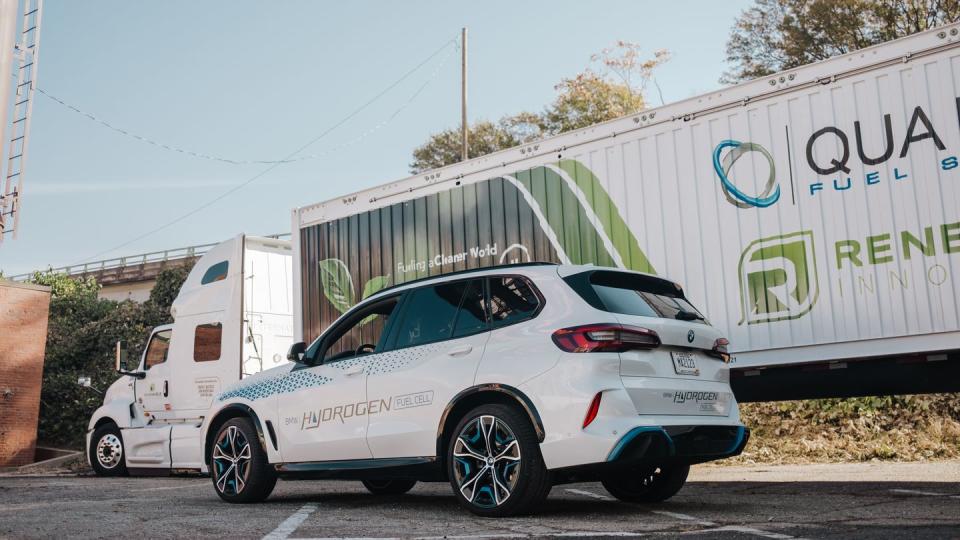
BMW believes that two new sources of alternative energy are better than one, reinforcing the German brand's continued interest in hydrogen fuel-cell vehicles.
The Bavarians are so interested that they've been touring the globe with a series of prototype, hydrogen fuel-cell X5s to bolster consumer trust.
We got to drive the BMW iX5 Hydrogen in South Carolina and got a deeper dive into BMW's hydrogen strategy for the road ahead.
To say the average American car buyer is pragmatic would be to assume, well, a lot. However, to say that a majority of drivers in the US are skeptical of change isn't that far off, as indicated by recent EV sales trends. Making a seemingly drastic change to our daily lives is going to take more than some tax credits and feel-good environmentalism for most.
But what if you could replicate the fueling process and benefit from electrification? BMW says this fictitious utopia is really only a few years and several hydrogen refueling stations away. To prove its point, the Bavarian brand has been on a world tour with its iX5 Hydrogen pilot fleet.
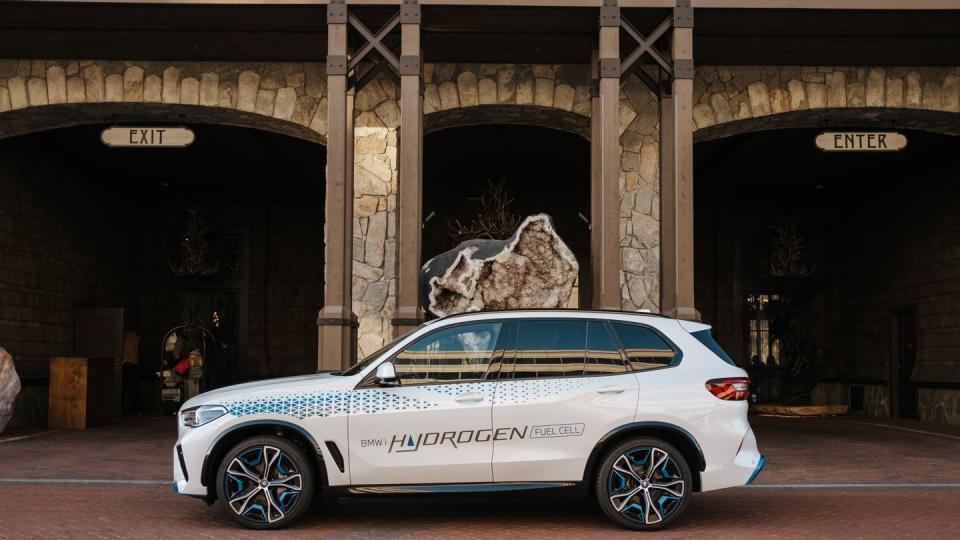
It is a true world tour as well, with pilot vehicles deployed to Europe, Japan, Korea, China, the USA, and the Middle East. Tested in sub-zero temperatures as well as the scorching desert, BMW is on a mission to prove that its hydrogen-powered X5 is not just a gimmick.
Produced at BMW's Research and Innovation Center in Munich, the hydro iX5 is built on the current X5 platform with significant changes to the powertrain. Namely, the individual fuel cells come from Toyota Motor Corporation and are stacked in a fully automated process and then compressed before being placed into a voltage-tested mold.
Connected to a fifth-generation BMW eDrive unit, BMW says this hydrogen-powered family hauler is good for 401 hp and 313 miles of WLTP-certified range. The vehicle uses two hydrogen tanks with a combined capacity of 6 kg (13 pounds), with a quoted refueling time of four minutes, much like a typical gas station fill-up.
As for how it really works, it's better to hear from the expert on the matter— BMW's Hydrogen Program Manager, Dr. Jürgen Guldner:
"We have two hydrogen tanks here and we convert this together with oxygen from the air into electricity, directly driving the electric motor and powering the rear axle. The electric motor is taken from our iX. Then we have this extra battery that acts as a buffer that has a lot of power, but not much energy content and therefore doesn't use that many raw materials.
Now what happens in here is the chemical reaction between hydrogen and oxygen from the ambient air. We pull in the air through the compressor and... here the hydrogen molecule is split up into the protons and electrons. Now the electrons go and have to drive the car. Basically, there's a DC converter that is lifted to the 400 volts that the electric motor operates and then this electricity is used to drive the car."
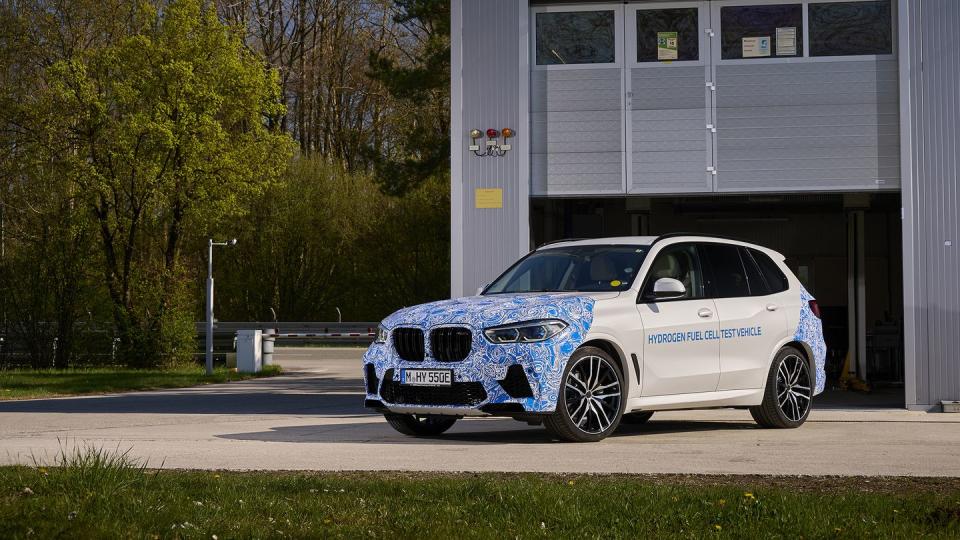
Speed isn't exactly the point of this hydrogen test bed, but BMW says the iX5 Hydrogen will sprint from 0 to 60 mph in around six seconds. Compared to a base model 2023 BMW X5, that's about 0.7 seconds slower, indicating the hydrogen testing aims for comparative internal-combustion performance.
To further prove its point that hydrogen is nearly there, BMW let us try out its touring iX5 Hydrogen fleet in South Carolina earlier this month, with some caveats. This drive review will focus on the hydrogen-powered powertrain.
Our drive route with the iX5 consisted of rush-hour congested Greenville side streets and a brief acceleration stint on the highway on-ramp. Even so (or perhaps because of this limitation), the primary impression left on me by the iX5 Hydrogen was one of consistency within the electric-vehicle market.
If you could drive a car blindfolded, it would be hard to tell the iX5 apart from other EVs. Its steering and pedal controls are ultra-light, with the corresponding mechanical actions happening smoothly and without drama. Regenerative braking is present, tuneable, and effective. It also makes a bunch of weird, low-frequency humming noises.
As much as the iX5 Hydrogen was somewhat unremarkable, it also served as a reminder that a properly implemented fuel-cell EV should be normal on all fronts. Save for a rapid fueling process, the electrified experience should remain consistent across its lineup, at least in traffic.
I think this uber-typical EV driving experience will actually play in BMW's favor should the iX5 Hydrogen come to fruition in the near future. Despite skepticism, the experience behind the wheel is nothing out of the ordinary.
But even BMW acknowledges the use case for hydrogen is limited. In committing to hydrogen, the company views FCEV technology expressly as a potential addition to the drive technology used by battery-electric vehicles. Similarly, there is evidence that smaller passenger vehicles aren't the right use cases for hydrogen.
"In general, the heavier the vehicle is, the more hydrogen makes sense from a usability point of view, and also from a technical point of view. We think in the long term, most of the long distance, heavy-duty transport trucks and also long-distance buses will rather run on hydrogen than on electricity," explained Dr. Jürgen Guldner.
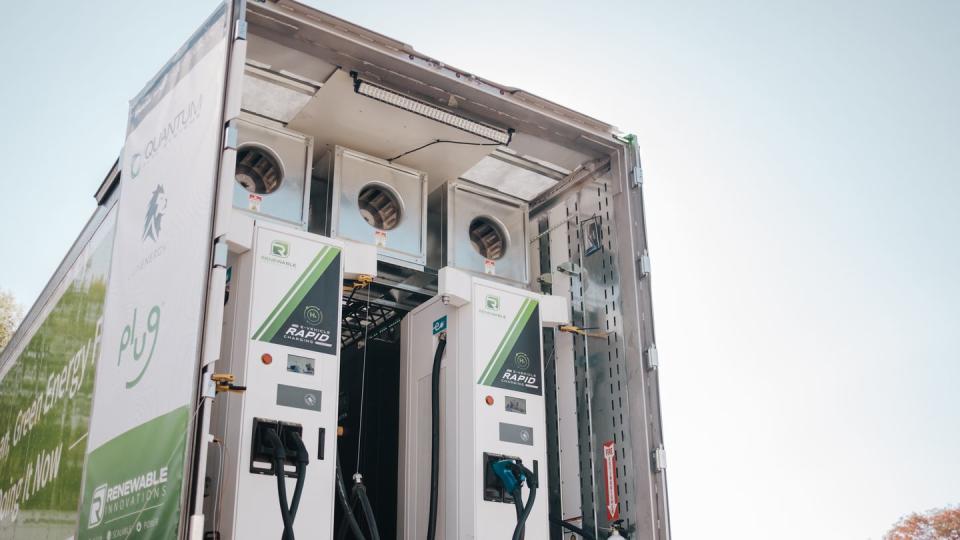
And the executives in Munich certainly aren't alone in this stance. Toyota, Hyundai, and Nikola continue to offer consumer-ready hydrogen vehicles in certain states. Other manufacturers initially followed in Toyota's footsteps but stopped short of a full-scale push, with Honda's Clarity enjoying a single model year.
Even so, BMW remains in its fledgling phases of hydrogen testing, after revealing an initial prototype of the iX5 in 2021. Even with Toyota's expertise in its back pocket, BMW will ultimately be responsible for determining its own course into an emissions-free future, and the Germans unsurprisingly want to see hydrogen testing firsthand.
And they've got plenty enough hydrogen pumps on hand to do so, at least in Europe and South Carolina.
Partnering with a company called H2 Mobility in Germany, the reliability and crowding issues seen at California's limited stations won't be a problem for European buyers. Currently, 275 hydrogen stations were available for consumer use in Europe and the Middle East.
Similarly, a number of its local plant vehicles are powered by locally sourced hydrogen in South Carolina. And herein lies the best usage for hydrogen, Guldner explained. A great deal of production processes at BMW's plant have yet to be hydrogen-powered, in part due to logistical challenges.
Committing to being carbon-free by 2050, BMW is looking into further expanding its plants' hydrogen reliance.
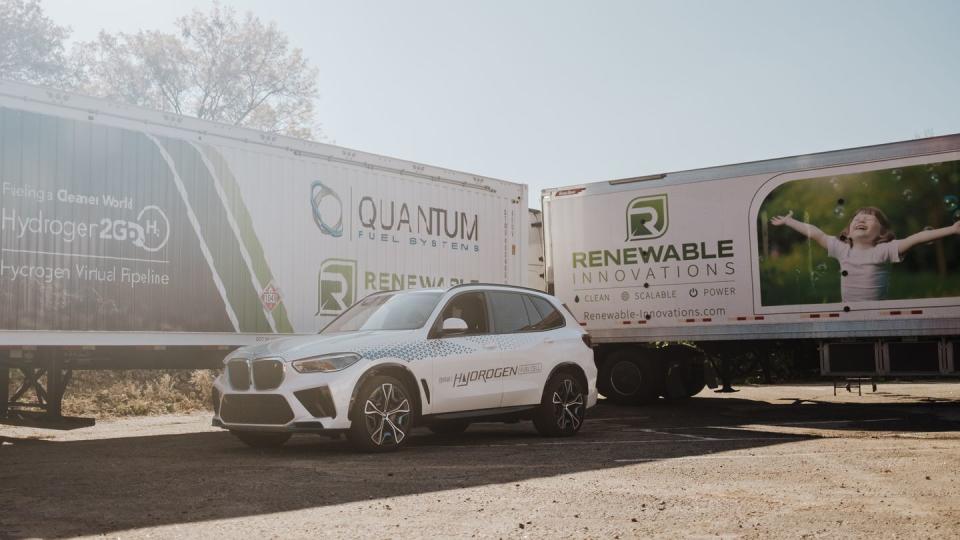
From hydrogen freight transport to replacing its natural-gas heating with hydrogen, BMW has clearly bought into a hydrogen-rich future, especially if it can pair hydrogen with electricity.
"We should use this potential to also accelerate the transformation of the mobility sector. One technology on its own will not be enough to enable climate-neutral mobility worldwide," said Oliver Zipse, Chairman of the Board of Management at BMW.
If hydrogen fueling stations were more plentiful, would your feelings about the technology change? Please share your thoughts below.

 Yahoo Autos
Yahoo Autos 